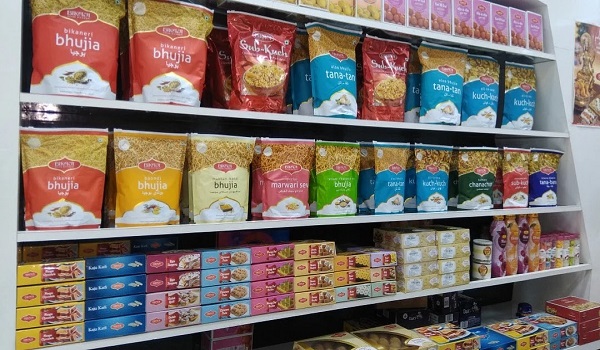Ethnic snacks major Bikaji Foods International Limited is focusing on rural markets, regional flavour extensions, and operational innovation to sustain momentum amid volatile commodity prices and evolving retail channels.
According to Manoj Verma, Chief Operating Officer of Bikaji Foods, the company is pursuing volume and value growth by balancing factory-led scale with value-based pricing strategies. “While soft commodity prices helped us last year, current cost pressures have compelled us to pass on price increases while maintaining EBITDA margins,” Verma noted.
Expanding Rural Footprint
Bikaji is aggressively expanding into India’s underpenetrated rural belt, which houses 60% of the country’s retail outlets. The brand is targeting over 25,000 rural towns, with plans to move into 10,000+ population clusters as distribution deepens. To strengthen this push, the company is investing in sub-distributors, wholesale partnerships, and rural retail schemes.
Verma added that wholesale markets in urban hubs are being used as feeders to rural territories, forming part of a hybrid distribution strategy aimed at maximizing reach and returns.
Riding the Regional Flavour Wave
Rather than diversifying into unrelated categories, Bikaji is focusing on regional favourites. A recently launched high-spice snack, originally popular in the Northeast, has been extended to Bihar, UP, and Raipur, while its Jhal Modi variant is gaining traction across several states.
“Regional preferences are key to demand capture. Instead of reinventing the wheel, we’re enhancing what already resonates deeply with local consumers,” Verma said.
Navigating Retail Channels
General Trade (GT) still accounts for 85% of Bikaji’s revenue but remains a volume-driven, cluttered space. On the other hand, Modern Trade (MT) offers better returns on investment with predictable performance metrics and joint business planning models. Quick commerce, while growing at 85% year-to-date, is still a small contributor.
To cater to price-sensitive consumers, especially in rural regions, Bikaji continues to focus on small pack sizes, which dominate sales across thousands of small-format retail outlets.
Coping with Commodity Costs and Health Trends
The company is also responding to fluctuations in raw material prices. While edible oil prices have surged from ₹90 to ₹140 per litre, the drop in the prices of dals and peanuts has helped offset some of the inflationary burden. Another round of price hikes is planned for the current quarter.
Verma highlighted a growing consumer preference for healthier oil alternatives. “We traditionally use cottonseed oil, which is an indigenous and healthier option compared to palm oil. Our R&D team is also exploring soybean and rice bran oils to improve product health profiles and margins,” he added.
With a sharp eye on operational efficiency and regional relevance, Bikaji Foods is poised to deepen its rural presence while staying rooted in consumer-led innovation, setting the stage for sustainable and flavorful growth.


